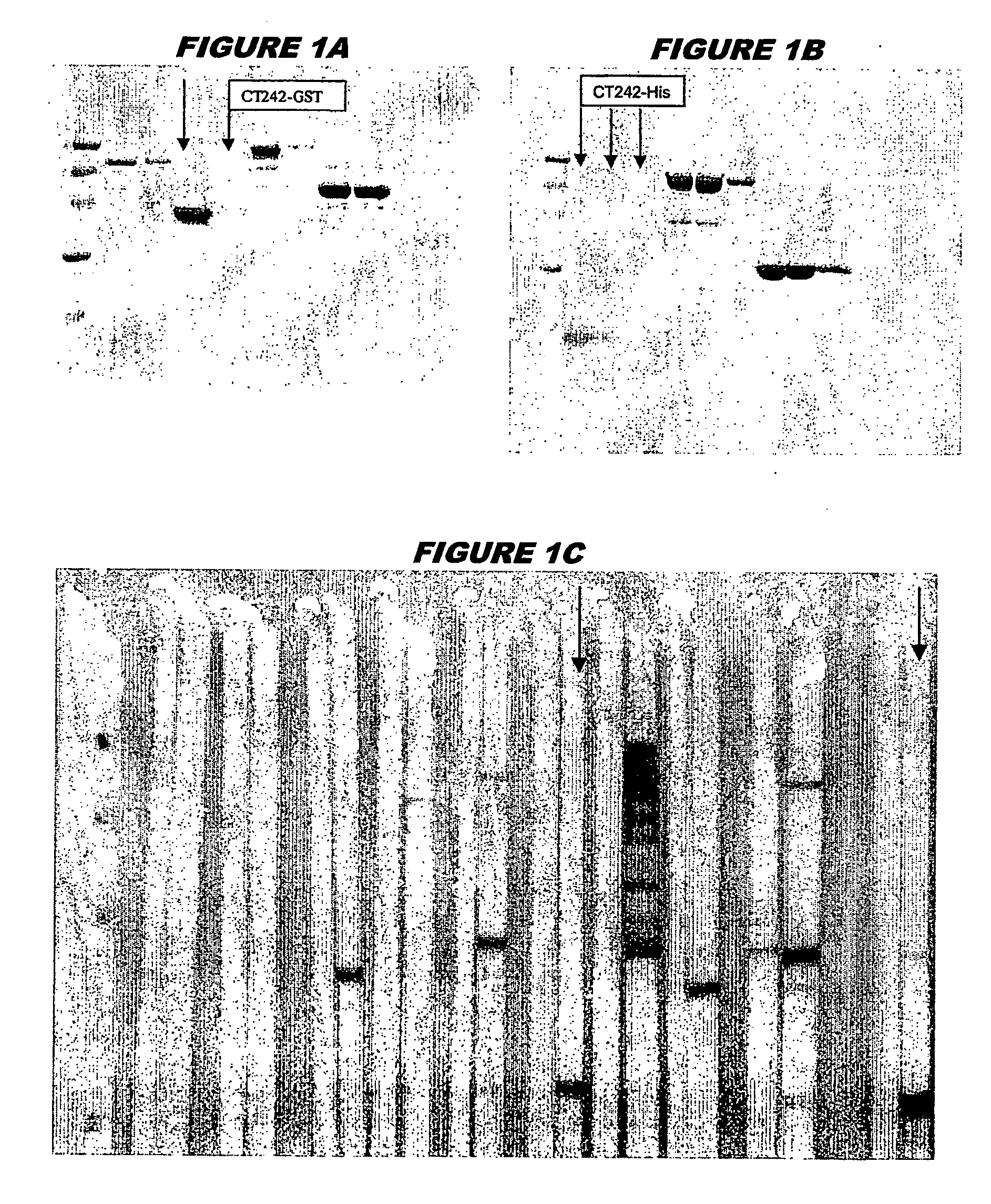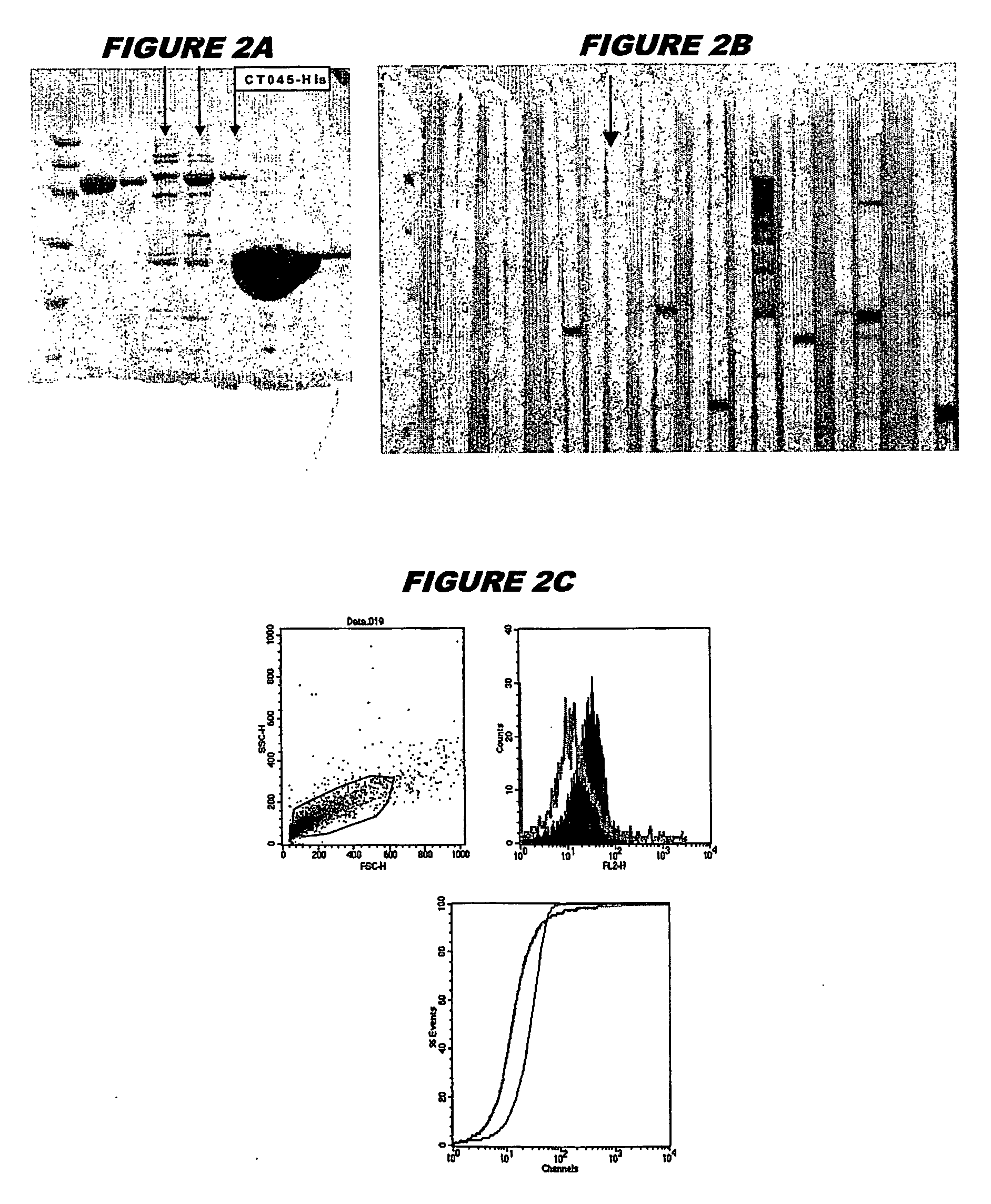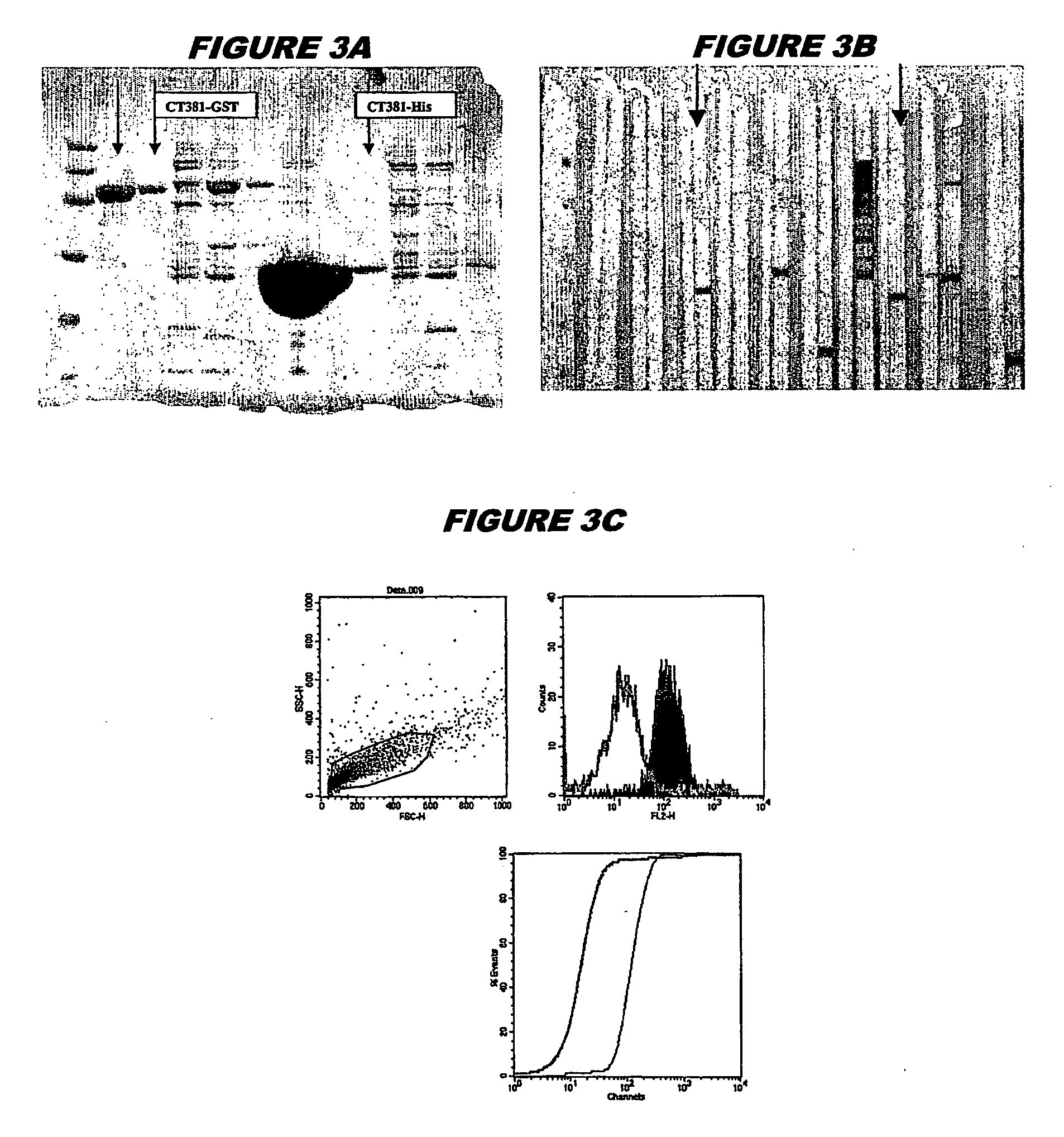Immunisation against Chlamydia trachomatis
a technology of chlamydia trachomatis and immunomodulation, which is applied in the field of immunomodulation against chlamydia trachomatis, can solve the problems of chlamydia severe consequences, sterility and blindness, and protection conferred by natural chlamydia infection, and achieves the effect of efficient harvesting and facilitating the isolation and purification of recombinant proteins
- Summary
- Abstract
- Description
- Claims
- Application Information
AI Technical Summary
Benefits of technology
Problems solved by technology
Method used
Image
Examples
example 1
[0236] CT242 (SEQ ID 57 and SEQ D 58) was expressed in E. coli. The recombinant product was purified both as a GST-fusion protein (FIG. 1A; lanes 4 and 5, chromatography fractions 1 and 2, expected molecular weight 42.4 kDa) and as a His-tagged fusion protein (FIG. 1B; lanes 2-4, chromatography fractions 1, 2 and 3, expected molecular weight 16.4 kDa).
[0237] The recombinant protein was used to immunise mice, whose sera were used in a Western blot (FIG. 1C: His-tagged: lanes 12 and 13; GST-fusion: lanes 20 and 21). Lane 12 shows membrane strips stained with pre-immune sera for His-tagged CT242 whilst lane 13 shows membrane strips stained with immune sera for His-tagged CT242. Lane 20 shows membrane strips stained with preimmune sera for GST-fusion CT242 whilst lane 21 shows membrane strips stained with immune sera for GST-fusion CT242.
[0238] These experiments show that CT242 is a surface-exposed and immunoaccessible protein, and that it is a useful immunogen. These properties are n...
example 2
[0239] CT045 (SEQ ID 71 and SEQ ID 72) was expressed in E. coli. The recombinant product was purified as a His-tagged fusion protein (FIG. 2A; lanes 4-6, chromatography fractions 1, 2 and 3, expected molecular weight 55.8 kDa). The recombinant protein was used to immunise mice, whose sera were used in a Western blot (FIG. 2B, lanes 8 and 9) and for FACS analysis (FIG. 2C, K-S value 16.81).
[0240] These experiments show that CT045 is a surface-exposed and immunoaccessible protein, and that it is a useful immunogen. These properties are not evident from the sequence alone.
example 3
[0241] CT381 (SEQ ID 105 and SEQ ID) 106) was expressed in E. coli. The recombinant product was purified both as a GST-fusion protein (FIG. 3A; lanes 2 and 3, chromatography fractions 1 and 2, expected molecular weight 52.7 kDa) and as a His-tagged fusion protein (FIG. 3A; lanes 7-9, chromatography fractions 1, 2 and 3, expected molecular weight 26.7 kDa). The recombinant protein was used to immunise mice, whose sera were used in a Western blot (FIG. 3B: His-tagged: lanes 6 and 7; GST-fusion: lanes 16 and 17) and for FACS analysis (FIG. 3C: GST-tagged, K-S value 35.98; FIG. 3D: His-tagged, K-S value 32.54).
[0242] These experiments show that CT381 is a surface-exposed and immunoaccessible protein, and that it is a useful immunogen. These properties are not evident from the sequence alone.
PUM
| Property | Measurement | Unit |
|---|---|---|
| concentration | aaaaa | aaaaa |
| Tm | aaaaa | aaaaa |
| exposure time | aaaaa | aaaaa |
Abstract
Description
Claims
Application Information
 Login to View More
Login to View More - R&D
- Intellectual Property
- Life Sciences
- Materials
- Tech Scout
- Unparalleled Data Quality
- Higher Quality Content
- 60% Fewer Hallucinations
Browse by: Latest US Patents, China's latest patents, Technical Efficacy Thesaurus, Application Domain, Technology Topic, Popular Technical Reports.
© 2025 PatSnap. All rights reserved.Legal|Privacy policy|Modern Slavery Act Transparency Statement|Sitemap|About US| Contact US: help@patsnap.com



